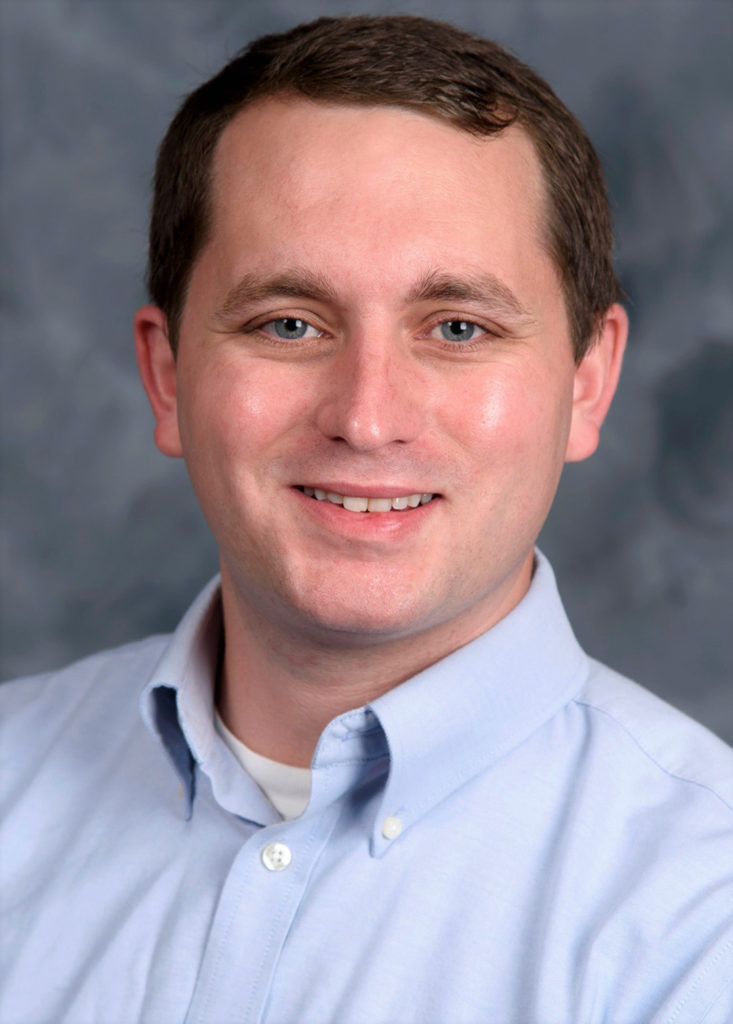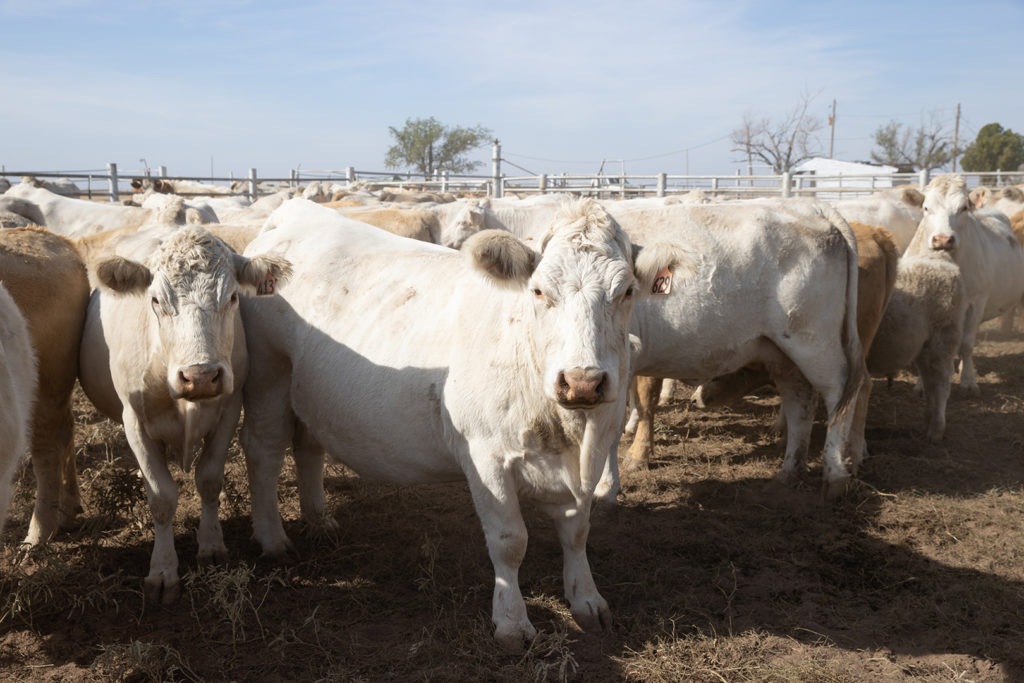Newest Team VERO Member To Study Bovine Respiratory Disease In Texas Panhandle
Story by Margaret Preigh, CVMBS Communications

As the Texas A&M College of Veterinary Medicine & Biomedical Sciences’ (CVMBS) Veterinary Education, Research, & Outreach (VERO) program’s newest assistant professor of microbial ecology and infectious disease, Dr. Matthew Scott is on a mission to prevent infectious disease in cattle living in high-risk settings, such as feedlot facilities.
“I investigate host/infectious disease relationships regarding clinical bovine respiratory disease (BRD) with bioinformatic (a field including biology, computer science, information engineering, and mathematics) and molecular approaches,” Scott said. “Largely what I am wanting to do is develop pipelines that we can use to investigate and mitigate risk of infectious disease, specifically in terms of respiratory disease.”
BRD, the leading disease complex in cattle, can cause pneumonia in calves, which is often fatal.
In U.S. cattle alone, the U.S. Department of Agriculture estimates that this disease complex costs the feedlot industry around $1 billion annually. The devastating effects result from host, pathogen, and environmental interactions that are incompletely understood.
“One thing I’m interested in right now is identifying candidate biomarkers, candidate molecules, specifically expressed genes, and functional mechanisms of cattle related to BRD, especially in high-risk settings,” he said. “We can use that information to predict risk of disease before affected cattle ever show clinical signs of disease.”
Scott believes that because the VERO program is based in the Texas Panhandle, the nation’s leading region for beef production, it is the ideal place to investigate BRD and develop solutions to ensure the stability of our nation’s food supply, while also preventing disease-driven economic loss in the cattle industry.
“From a research perspective, my decision to join VERO comes down to geography, personnel, and industry,” he said. “The VERO team is putting together a long list of really impressive and well-known respiratory disease and livestock researchers. Dr. Paul Morley, Dr. Sarah Capik, and Dr. Dee Griffin have been involved in respiratory disease research for a while and are very good at it.”
Scott’s drive to promote bovine health began from an early age.
“I’m looking forward to talking to producers and practitioners alike and getting to implement some of the research I’ve been working on, especially in real-world settings. There are so many new ideas, so many new concepts, and so many new ways to approach these questions that the world is our oyster.”
DR. MATTHEW SCOTT
“I got into beef cattle production and started working in the dairy industry in North Florida during my junior year of high school,” he said. “I really just fell in love with it.”
He graduated from Louisiana State University in 2013 with a Bachelor of Science degree in animal sciences and continued his education at Mississippi State University, earning his Doctor of Veterinary Medicine (DVM) in 2018. He is currently wrapping up his Ph.D. in veterinary medical science – infectious diseases at Mississippi State University and will earn a minor in computational biology in addition to his doctorate.
Scott says he entered veterinary school with the intention of becoming a dairy cattle veterinarian but became enamored with the field of immunology while conducting research on catfish. His work with BRD combines these two passions and fills a much-needed niche in the veterinary profession.
“Immunology is a world we can’t really see,” Scott said. “What drew me in was that there’s so much we don’t understand; there’s so much about these organisms—whether they are bacterial, fungal, or viral—and their interactions with hosts that we just don’t have a firm grasp on like we do with humans, dogs, cats, and everything else.”
By combining his aptitude for data science and the geographic advantages of the VERO program, Scott looks forward to applying his research toward improving bovine health in the hands-on environment of cattle operations.
“The thing that brings me the most joy is the idea of utilizing some of these more basic science concepts and applying them to aspects of field diagnostics and field research with cattle,” Scott said. “I want to be the bridging scientist who uses the tools we apply in high-level computational approaches and asks, ‘how can we apply them down chute side on a feedlot?’”
The robust connection with local industry VERO has formed in its home base of Canyon will be vital to conducting groundbreaking research in areas pertaining to feedlot animal health.
“The VERO program has set itself up to stand out in that regard, with personnel and resources and by directly working with the industry itself,” he said. “That is a recipe for success in terms of researching a disease complex like BRD.”
Scott is also eager to instruct future students and share his passion for immunology and animal health.

“The opportunity to teach students is exciting, regardless of whether they’re veterinary, graduate, or undergraduate students,” he said. “I want to teach them to consider new ideas in a molecular way of thinking in livestock production.
“Where we’re headed with research helps to guide what we will teach within the next five to 10 years,” he said. “Implementing these newer ideas of thinking about disease and management really excites me as a future educator.”
He will join the VERO team on June 7 and plans to hit the ground running on his research endeavors, integration into the VERO team, and building relationships with the cattle industry.
“There are a lot of things to be excited about, including being in a new place, getting to join a new team and meeting new people, hearing new ideas, and collaborating with new scientists,” he said. “I’m looking forward to talking to producers and practitioners alike and getting to implement some of the research I’ve been working on, especially in real-world settings. There are so many new ideas, so many new concepts, and so many new ways to approach these questions that the world is our oyster.”
###
For more information about the Texas A&M School of Veterinary Medicine & Biomedical Sciences, please visit our website at vetmed.tamu.edu or join us on Facebook, Instagram, and Twitter.
Contact Information: Jennifer Gauntt, Director of VMBS Communications, Texas A&M School of Veterinary Medicine & Biomedical Sciences, jgauntt@cvm.tamu.edu, 979-862-4216


